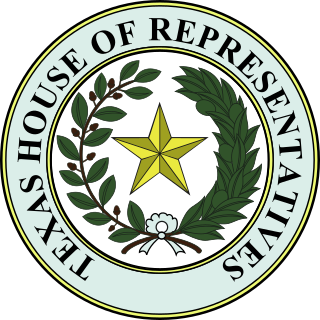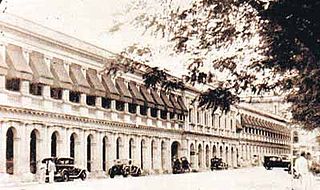External links
| Components |
| ||||
|---|---|---|---|---|---|
| Parliamentary officers |
| ||||
| Members |
| ||||
| Parliaments | |||||
| Procedure | |||||
| Elections |
| ||||
| Locations | |||||
| See also | |||||
The Clerk of the Australian Senate is the head of the Parliamentary Department of the Senate, which is the parliamentary department supporting the work of the Australian Senate. The Clerk is responsible to the President of the Senate who in turn is responsible for the department to the Senate. The Department of the Senate is not part of the Executive Government of Australia. The current Clerk is Richard Pye. The Deputy Clerk of the Senate is Jackie Morris. Since 1999, the terms of the Clerk of the Senate, as that of the Clerk of the House of Representatives, have been limited to 10 years. The change did not apply to the incumbents.
The Department of the Senate provides advice and support to the Senate, its committees, the President of the Senate and senators. The Clerk is directly responsible for:
In addition, the office exercises overall responsibility for, and quality control of, all procedural and administrative activities of the department.
| No. | Name | Term in Office |
|---|---|---|
| 1 | Edwin Gordon Blackmore CMG | 1 April 1901 – 30 June 1908 |
| 2 | Charles Broughton Boydell | 1 July 1908 – 31 December 1916 |
| 3 | Charles Cashel Gavan Duffy CMG | 1 February 1917 – 27 August 1920 |
| 4 | George Henry Monahan CMG | 28 August 1920 – 31 December 1938 |
| 5 | Robert Arthur Broinowski | 1 January 1939 – 30 November 1942 |
| 6 | John Ernest Edwards | 1 December 1942 – 20 July 1955 |
| 7 | Rupert Harry Colin Loof CBE | 21 July 1955 – 14 August 1965 |
| 8 | James Rowland Odgers CBE | 16 August 1965 – 8 August 1979 |
| 9 | Roy Edwards Bullock OBE | 9 August 1979 – 15 July 1981 |
| 10 | Keith Oscar Bradshaw | 29 October 1980 – 15 July 1982 |
| 11 | Alan Ritchie Cumming Thom | 16 July 1982 – 15 February 1988 |
| 12 | Harry Evans | 17 February 1988 – 4 December 2009 |
| 13 | Dr Rosemary Laing | 5 December 2009 – 8 March 2017 |
| 14 | Richard Pye | 9 March 2017 – |
The longest-serving Clerk was Harry Evans, who served 21 years, from 1988 to 2009.

The House of Representatives is the lower house of the bicameral Parliament of Australia, the upper house being the Senate. Its composition and powers are set down in Chapter I of the Constitution of Australia.

The Senate is the upper house of the bicameral Parliament of Australia, the lower house being the House of Representatives. The composition and powers of the Senate are established in Chapter I of the Constitution of Australia. There are a total of 76 senators: 12 are elected from each of the six Australian states regardless of population and 2 from each of the two self-governing internal Australian territories. Senators are popularly elected under the single transferable vote system of proportional representation.

The Parliament of Australia is the legislative body of the federal level of government of Australia. It consists of three elements: the monarch, the Senate and the House of Representatives. It combines elements from the UK Parliament and the US Congress.

The president of the Senate is the presiding officer of the Australian Senate, the upper house of the Parliament of Australia. The counterpart in the lower house is the speaker of the House of Representatives. The office of the presidency of the senate was established in 1901 by section 17 of the Constitution of Australia. The primary responsibilities of the office is to oversee senate debates, determine which senators may speak, maintain order and the parliamentary code of conduct during sessions and uphold all rules and orders of the senate. The current president is Sue Lines, who was elected on 26 July 2022.
A cabinet secretary is usually a senior official who provides services and advice to a cabinet of ministers as part of the Cabinet Office. In many countries, the position can have considerably wider functions and powers, including general responsibility for the entire civil service.

The Texas House of Representatives is the lower house of the bicameral Texas Legislature. It consists of 150 members who are elected from single-member districts for two-year terms. There are no term limits. The House meets at the State Capitol in Austin.

The Victorian Legislative Assembly is the lower house of the bicameral Parliament of Victoria in Australia; the upper house being the Victorian Legislative Council. Both houses sit at Parliament House in Spring Street, Melbourne.

The Parliament of the Democratic Socialist Republic of Sri Lanka is the supreme legislative body of Sri Lanka. It alone possesses legislative supremacy and thereby ultimate power over all other political bodies in the island. It is modeled after the British Parliament.

The treasurerof Australia, also known as the Federaltreasurer or simply the treasurer, is the minister of state of the Commonwealth of Australia charged with overseeing government revenue collection, federal expenditure and economic policy as the head of the Department of the Treasury. The current treasurer is Jim Chalmers, who was selected by Prime Minister Anthony Albanese in May 2022 following the 2022 Australian federal election.
The Cabinet of Australia, also known as the Federal Cabinet, is the chief decision-making body of the Australian government. The cabinet is appointed by the prime minister of Australia and is composed of senior government ministers who head the executive departments and ministries of the federal government. The cabinet is separate to the federal Department of the Prime Ministers and Cabinet.

The secretary of the Senate is an officer of the United States Senate. The secretary supervises an extensive array of offices and services to expedite the day-to-day operations of that body. The office is somewhat analogous to that of the clerk of the United States House of Representatives.
The parliamentarian of the United States House of Representatives manages, supervises, and administers the Office of the Parliamentarian, which is responsible for advising the House's presiding officers, members, and staff on procedural questions under the U.S. Constitution and House rules and precedents, as well as for preparing, compiling, and publishing the precedents of the House.
The committees of the Australian Senate are committees of Senators, established by the Australian Senate, for purposes determined by that body. Senate committees are part of the operation of the Australian parliament, and have for some decades been involved in maintenance of government accountability to the Australian parliament, particularly through hearings to scrutinise the budget, and through public inquiries on policy questions.
The Clerk of the House of Representatives of the Parliament of Australia is responsible for managing the Parliamentary Department of the House of Representatives. The Clerk is a non-elected administrative officer under the Parliamentary Service Act 1999. The term of the Clerk of the House of Representatives is now limited by law to 10 years. On 12 August 2019, Claressa Surtees became the first female Clerk of the House.
Michael Eamon Beahan was a British-born Australian politician who served as the 19th President of the Australian Senate, holding that position from 1 February 1994 to 30 June 1996. He was a Senator representing Western Australia in the Australian Senate from 1987 to 1996.

The Senate was the upper chamber of the parliament of Ceylon established in 1947 by the Soulbury Commission. The Senate was appointed and indirectly elected rather than directly elected. It was housed in the old Legislative Council building in Colombo Fort and met for the first time on 12 November 1947. The Senate was abolished on 2 October 1971 by the eighth amendment to the Soulbury Constitution, prior to the adoption of the new Republican Constitution of Sri Lanka on 22 May 1972. In 2010 there were proposals to reintroduce the Senate.

Harry Evans was the longest-serving Clerk of the Australian Senate, serving from 17 February 1988 to 4 December 2009. He was considered an "ardent and outspoken defender" of the independence and constitutional authority of the Senate.

Wojciech Sawicki served as the Secretary General of the Parliamentary Assembly of the Council of Europe (PACE), a body bringing together parliamentarians from the national parliaments of the 47 Council of Europe member states, for a ten-year period from February 2011 to February 2021.

Cabinet Secretary is a ministerial portfolio within the Australian federal government. It has existed in three periods, from 2007 to 2013, from 2015 to 2017, and since 2022. The minister is responsible for assisting the Prime Minister of Australia in managing the day-to-day procedural and operational matters of the Cabinet and any Cabinet committees. The Cabinet Secretary's portfolio falls within the Department of the Prime Minister and Cabinet.
In Australia, there are four parliamentary departments that provide advice and support to both Houses of the Australian Parliament, their members, committees as well as services to Parliament House, including visitors. The parliamentary departments operate under the Parliamentary Service Act 1999 and report only to one or both of the presiding officers of the Australian Parliament — the President of the Senate and the Speaker of the House of Representatives — who in turn are responsible for the departments to their respective house of parliament. Employees of these departments constitute the Australian Parliamentary Service, which is not part of the Australian Public Service. The parliamentary departments are independent of the Australian Government, though the Merit Protection Commissioner provides employment services to both services on an equivalent basis.